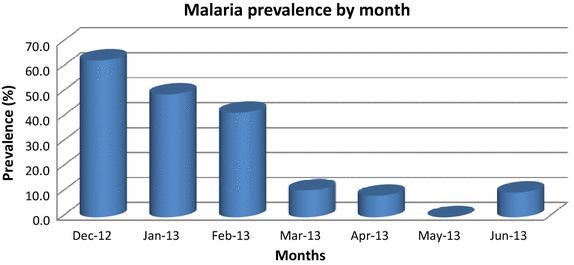Prevalence of malaria parasites in adults and its determinants in malaria endemic area of Kisumu County, Kenya
- PMID: 26152272
- PMCID: PMC4495611
- DOI: 10.1186/s12936-015-0781-5
Prevalence of malaria parasites in adults and its determinants in malaria endemic area of Kisumu County, Kenya
Abstract
Background: The prevalence of malaria parasites in adults in Africa is less well researched than in children. Therefore, a demographic surveillance site was used to conduct a household survey of adults in the malaria endemic area of Maseno division in Kisumu County near Lake Victoria.
Methods: A random survey of 1,190 adults living in a demographic health surveillance site in a malaria endemic area of 70,805 population size was conducted, measuring presence of malaria parasites by slide microscopy. Data were analysed using STATA to calculate the prevalence of malaria and associated risk factors.
Results: The adult prevalence of presence of malaria parasites in Maseno was 28% (95% CI: 25.4-31.0%). Gender was a significant sociodemographic risk factor in both univariate (OR 1.5, p = 0.005) and multivariate (OR 1.4, p = 0.019) analyses. Females were 50% more likely to have malaria than men.
Conclusions: Presence of malaria parasites is common in the adult population of this endemic area, and the rate is greatly increased in women. The presence of such an adult pool of malaria parasites represents a key reservoir factor in transmission of parasites to children, and is relevant for plans to eradicate malaria.
Figures
References
-
- WHO (2013) The world malaria report. WHO, Geneva. http://www.who.int/malaria/publications/world_malaria_report_2013
Publication types
MeSH terms
LinkOut - more resources
Full Text Sources
Other Literature Sources
Medical



